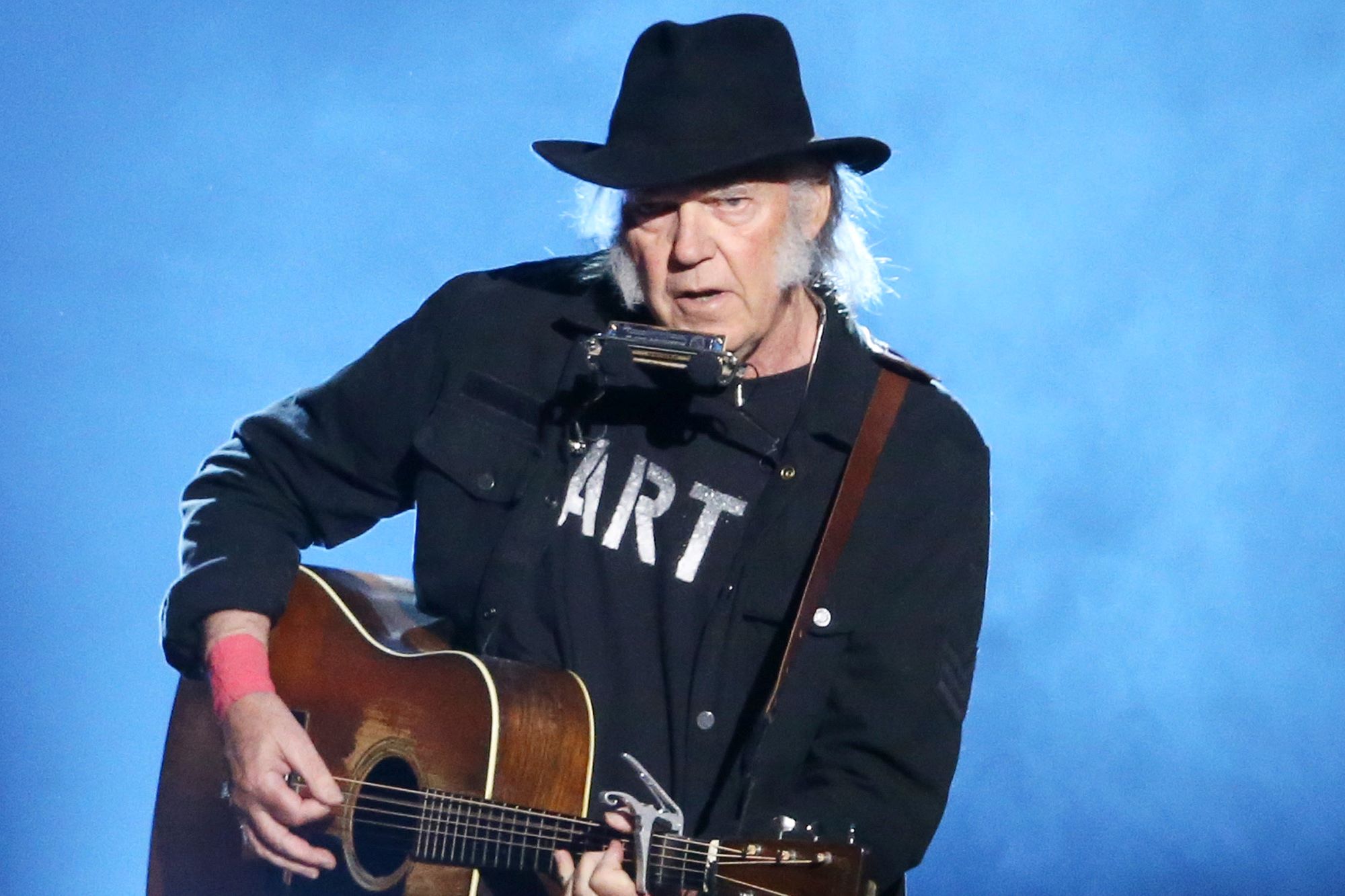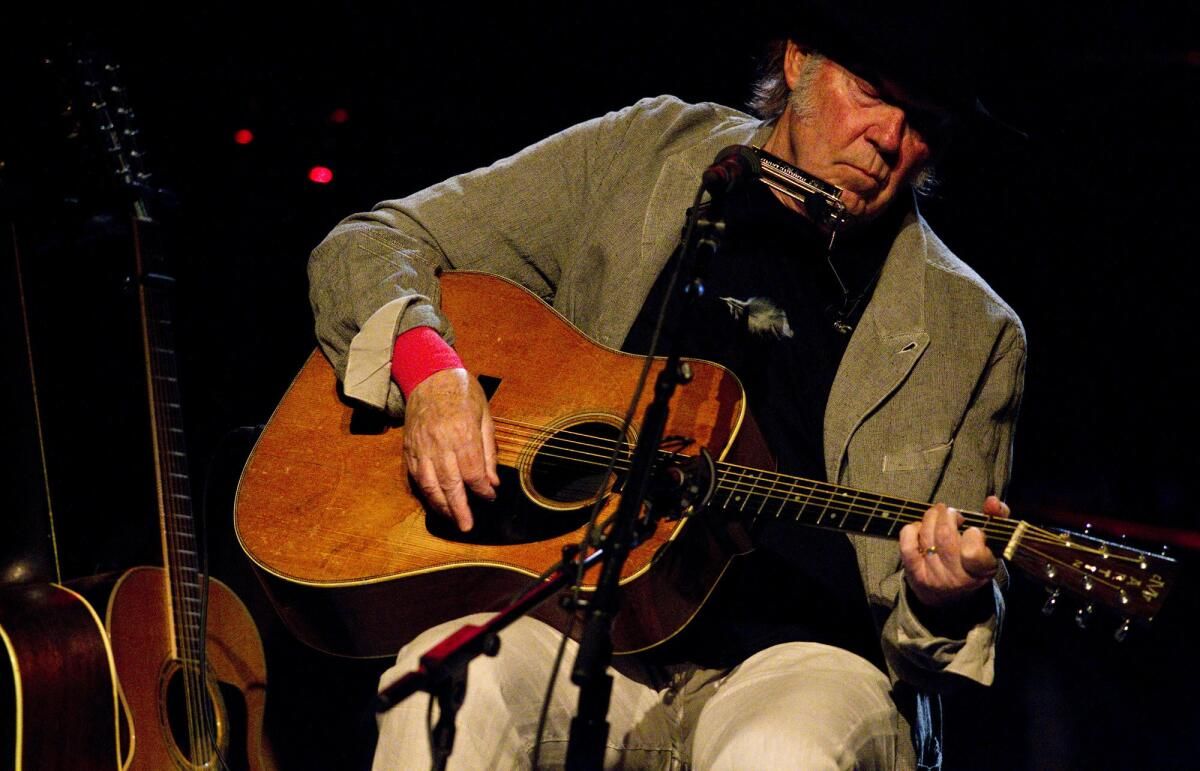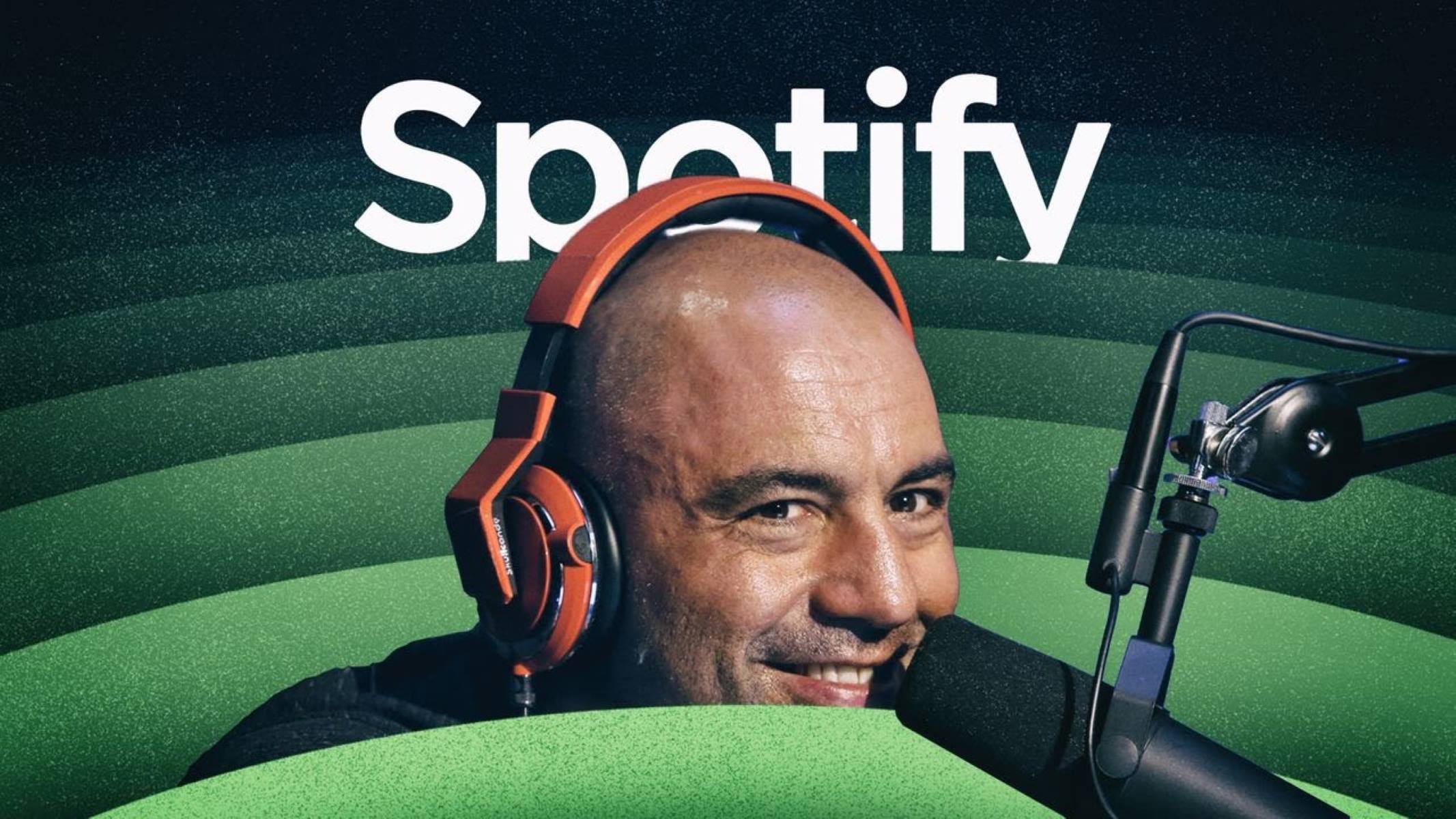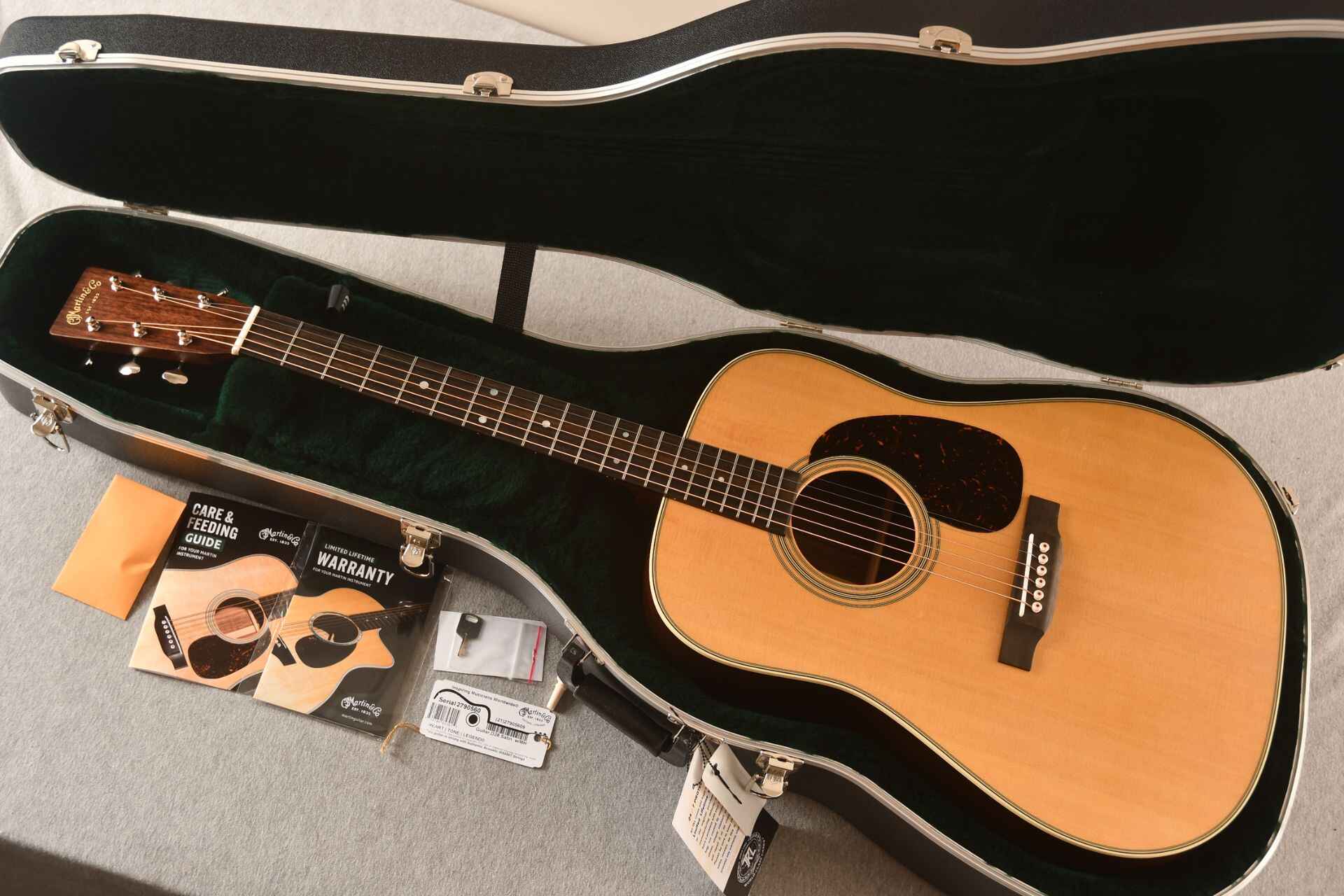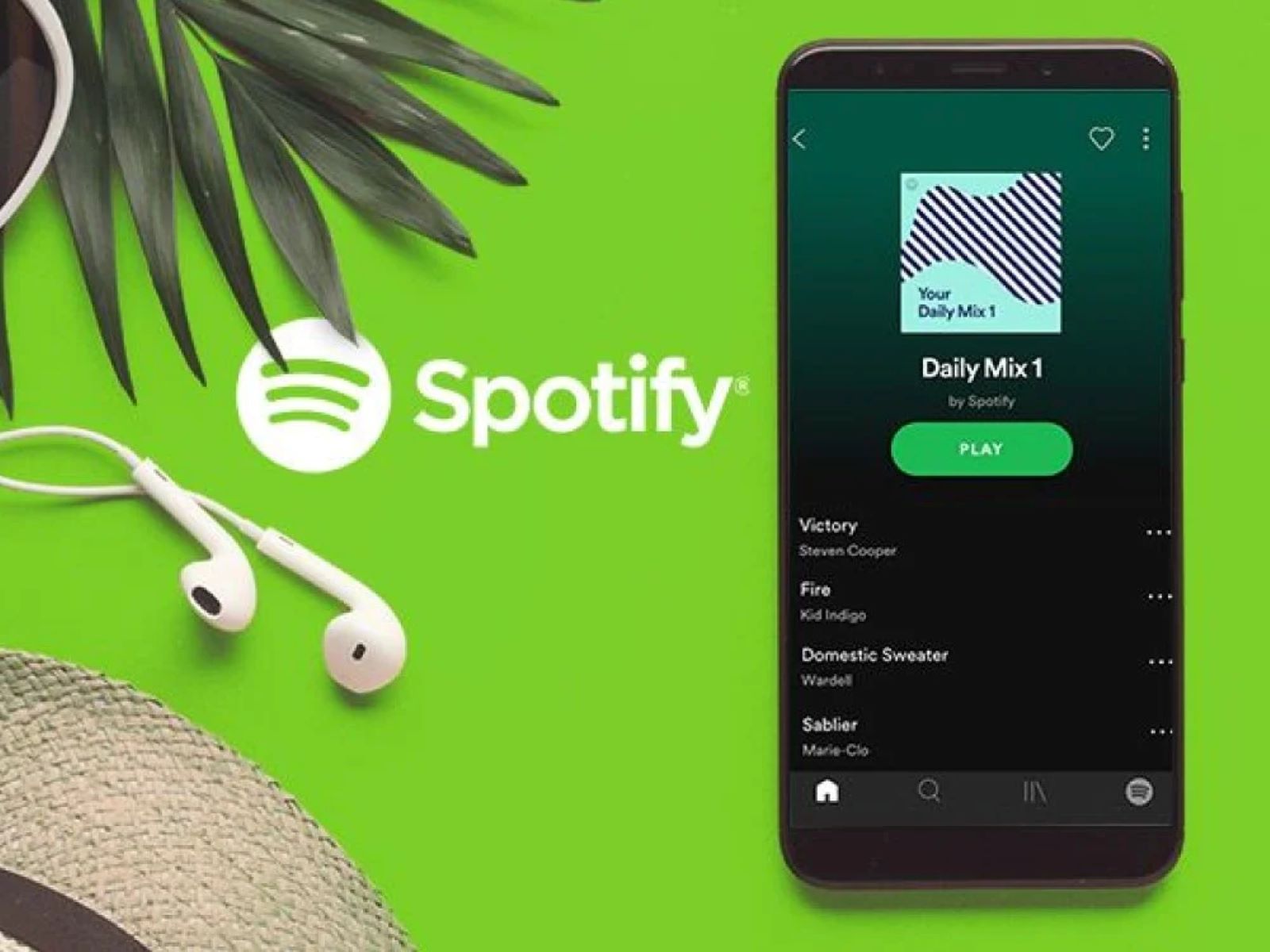The Controversy Surrounding Neil Young and Spotify
Neil Young, the iconic Canadian singer-songwriter and rock musician, has been at the center of a heated controversy with regard to his absence from the popular music streaming platform, Spotify. This decision by Young has sparked discussions among music fans, industry insiders, and fellow artists, raising important questions about the impact of music streaming on artists’ control, compensation, and sound quality.
Young’s decision to withhold his music from Spotify is largely rooted in his dissatisfaction with the sound quality offered by the streaming service. Known for his unwavering commitment to delivering high-quality music, Young has been vocal about the compromised audio experience on most streaming platforms. He believes that the convenience of streaming should not come at the expense of listeners missing out on the true essence and sonic nuances of his music.
Another factor contributing to the controversy is the lack of artist control on Spotify. Young has expressed concerns about Spotify’s algorithms and curated playlists that often prioritize popular and mainstream tracks over the work of lesser-known artists. This situation has led to a homogenization of the music landscape, with many talented but less commercially successful artists struggling to gain visibility and recognition.
Furthermore, the issue of artist compensation is a significant point of contention in Young’s decision regarding Spotify. While the platform claims to offer a fair revenue-sharing model, many artists argue that the streaming royalties they receive are significantly lower compared to traditional album sales or other forms of music distribution. This disparity has prompted Young to actively explore alternative streaming platforms that offer better compensation for artists.
Neil Young’s stance on music streaming has driven him to seek alternative platforms that align more closely with his values and priorities as an artist. One such platform is his own archive website, Neil Young Archives, which boasts high-quality audio and exclusive content directly curated by Young himself. Additionally, Young has supported the launch of other artist-owned platforms, such as TIDAL, that emphasize sound quality and artist control.
The controversy surrounding Neil Young’s absence from Spotify has drawn attention to the complex dynamics between artists, streaming platforms, and music listeners. It raises important questions about the trade-offs between convenience, sound quality, artist control, and fair compensation in the digital music era. Young’s decision serves as a powerful reminder that artists should have the freedom to choose which platforms align with their artistic vision and values, ultimately shaping the future of the music industry.
Introduction
With the rise of digital music streaming services, accessing our favorite tunes has never been easier. Spotify, one of the most popular platforms in the industry, offers a vast library of music from different genres and artists. However, there is one notable absence that has sparked controversy among music lovers: Neil Young.
Neil Young, the renowned Canadian singer-songwriter and rock musician, has chosen not to make his music available on Spotify, leaving fans puzzled and curious about the reasons behind his decision. This article aims to delve into the controversy surrounding Neil Young and Spotify, exploring the various factors that have influenced his stance and the broader implications for the music industry.
Neil Young is not one to shy away from expressing his opinions and advocating for artistic integrity. Known for his socially conscious lyrics and distinct musical style, Young has always been an artist who values authenticity and the quality of his craft. His decision to withhold his music from Spotify is rooted in his concerns about the compromised sound quality on digital streaming platforms.
While streaming services like Spotify have revolutionized the way we listen to music, they often compress audio files to reduce bandwidth and allow for faster streaming. This compression process can result in a loss of audio fidelity, reducing the richness and depth of the music. Neil Young’s commitment to delivering high-quality music to his fans has led him to seek alternative platforms that prioritize sound quality, ensuring that his creative vision is fully preserved.
In addition to sound quality, Neil Young has also voiced his concerns about the lack of artist control on Spotify. The platform’s algorithms and curated playlists heavily influence what users listen to, often favoring popular tracks and mainstream artists. This has led to a proliferation of homogenized content, making it more challenging for independent and lesser-known artists to gain exposure.
Another significant aspect of the controversy revolves around artist compensation. While streaming platforms like Spotify claim to offer fair revenue-sharing models, many artists argue that the royalties they receive are considerably lower compared to other forms of music distribution. This disparity in compensation has prompted Neil Young, along with other artists, to question the sustainability and fairness of the current streaming model.
With these factors in mind, Neil Young has sought out alternative music streaming platforms that better align with his values and priorities. By exploring his own archive website, Neil Young Archives, and supporting artist-owned platforms like TIDAL, Young is taking strides to ensure that his music is presented in the best possible way, with a focus on both sound quality and artist control.
The controversy surrounding Neil Young’s absence from Spotify is not only about one artist’s decision but also highlights broader issues within the music industry. It raises important questions about the trade-offs between convenience, sound quality, artist autonomy, and fair compensation in the digital age. Understanding Neil Young’s stance provides valuable insights into the evolving dynamics between artists, streaming platforms, and music listeners, shaping the ongoing discussions and future trajectory of the music industry.
Neil Young’s Stance on Music Streaming
Neil Young, a legendary figure in the music industry, has long been an outspoken advocate for preserving the integrity of the music listening experience. His stance on music streaming platforms, including Spotify, reflects his deep commitment to delivering high-quality audio to his fans.
One of the primary reasons behind Neil Young’s decision to withhold his music from Spotify lies in his dissatisfaction with the sound quality offered by most streaming services. While streaming platforms provide convenient access to a vast library of music, they often sacrifice audio fidelity through compression techniques to reduce file sizes and enable faster streaming. This compromises the full range of frequencies and nuances present in the original recordings, diminishing the immersive experience that Young believes music should provide.
Young’s dedication to delivering uncompromised sound led him to launch the Neil Young Archives, a website specifically designed to provide fans with high-resolution audio versions of his music. This platform allows fans to enjoy his music in its purest form, capturing the subtleties and intricacies that might be lost in lower-quality digital streaming experiences.
Another aspect that Young has raised concerns about is the lack of artist control on streaming platforms like Spotify. These platforms heavily rely on algorithms and curated playlists to determine what music is presented to users, often favoring popular and mainstream tracks. This setup poses challenges for independent and up-and-coming artists, as it can limit their visibility and make it more difficult to reach new audiences.
In contrast, the Neil Young Archives and other artist-owned platforms prioritize artist autonomy, allowing artists to have greater control over the presentation and distribution of their work. This emphasis on artist control resonates strongly with Young, who believes in the importance of artists being able to maintain their artistic vision and integrity.
Furthermore, Neil Young has been vocal about the issue of artist compensation on music streaming platforms. While streaming services have brought convenience and accessibility to music listeners, the financial compensation that artists receive for their work remains a contentious issue. Many artists argue that the royalties earned from streaming platforms are significantly lower compared to other forms of music distribution, such as physical sales or digital downloads.
Young’s decision to explore alternative streaming platforms that prioritize fair compensation reflects his commitment to advocating for artists’ rights. By supporting artist-owned platforms like TIDAL, which offer better revenue-sharing models, Young aims to create a more equitable environment for artists to thrive and continue creating the music that fans love.
Neil Young’s stance on music streaming demonstrates his unwavering dedication to delivering high-quality audio, prioritizing artist control, and advocating for fair compensation within the industry. His decision to abstain from Spotify and explore alternative platforms serves as a powerful statement, sparking conversations and pushing for positive changes within the music streaming landscape.
The Problem with Spotify’s Sound Quality
While Spotify has emerged as one of the leading streaming platforms, with millions of users worldwide, there is an underlying issue that has drawn criticism from artists like Neil Young: its sound quality. Despite its convenience and extensive music library, Spotify’s sound quality fails to meet the high standards set by discerning listeners and artists alike.
One of the main concerns regarding Spotify’s sound quality is the compression algorithms used to reduce file sizes and facilitate faster streaming. This compression method inevitably leads to a loss of audio fidelity, resulting in a less immersive and detailed listening experience. The intricate nuances, dynamic range, and depth that make music captivating are often sacrificed in the pursuit of convenience.
For artists like Neil Young, who pour their heart and soul into creating music, preserving the integrity of the audio is paramount. They believe that music should be experienced in all its richness and complexity, enabling listeners to fully appreciate the intricacies that exist within each track. However, Spotify’s sound quality compromises these qualities, leaving artists dissatisfied with how their work is represented on the platform.
Moreover, the concern extends beyond the artistic perspective. Audiophiles, music enthusiasts, and those who appreciate premium sound know that even the most well-produced tracks lose their luster when played through low-quality audio systems. The shortcomings in Spotify’s sound quality can be especially noticeable when listening on high-end headphones, professional audio equipment, or in acoustically optimized environments.
Recognizing the importance of sound quality, other streaming platforms have emerged that prioritize a higher fidelity audio experience. Services like TIDAL and Qobuz offer higher resolution audio options, catering to those who value the nuances and finer details of their favorite tracks. These platforms provide a more immersive listening experience, allowing listeners to dive deeper into the music.
While it’s true that not all listeners may prioritize sound quality to the same extent, the availability of alternative platforms that excel in this aspect highlights the demand for better audio experiences. As technology progresses, it is crucial for streaming platforms like Spotify to address this issue and consider options that provide users with the option to enjoy music in its highest possible quality.
Neil Young’s decision to focus on alternative platforms that prioritize sound quality, such as his own Neil Young Archives and artist-owned platforms like TIDAL, reflects his dedication to the integrity of music. By seeking out these alternatives, Young aims to ensure that his artistic vision is communicated faithfully to his audience, demonstrating his commitment to preserving the true essence and beauty of his music.
As music enthusiasts and artists alike continue to advocate for better sound quality, it remains to be seen whether Spotify and other streaming platforms will take the necessary steps to address this concern. The evolution of technology opens doors for advancements in sound reproduction, inviting platforms to embrace a future where listeners can fully immerse themselves in the immersive and breathtaking experience that music has to offer.
Spotify’s Lack of Artist Control
One of the key criticisms leveled against Spotify, particularly by artists like Neil Young, is the lack of artist control on the platform. Spotify’s algorithms and curated playlists heavily influence what music users are exposed to, often prioritizing popular and mainstream tracks over the work of independent or lesser-known artists. This raises concerns about the limited visibility and control that artists have over how their music is presented and discovered by listeners.
Traditionally, artists had more control over the presentation and distribution of their music through physical albums, radio play, and other avenues. This allowed them to shape their image, promote their work, and connect with their audiences in a more direct manner. However, in the digital era, streaming platforms like Spotify have become dominant gatekeepers of music consumption, with users relying heavily on the platform for music discovery and listening.
Spotify’s algorithms use data points such as popular playlists, user preferences, and listening history to curate personalized recommendations for each listener. While this approach aims to enhance the user experience, it inadvertently creates a bias towards already popular tracks and artists. As a result, emerging or lesser-known artists face significant barriers in gaining exposure and reaching wider audiences.
This lack of artist control is particularly problematic for artists who prioritize their creative vision and artistic integrity. Many musicians view their work as a complete body of art, with each track carefully curated and sequenced to convey a specific message or emotional journey. With Spotify’s algorithm-driven playlists and shuffle-based listening, the artist’s intended sequence and emotional flow of an album or EP can be disrupted, impacting the overall impact and narrative of the work.
Furthermore, the curated playlists on Spotify are often created by editorial teams within the company or third-party influencers. This means that artists have limited influence over whether their music is included in these playlists, which are essential for gaining exposure and expanding their fanbase. This lack of artist control can lead to frustrations, as many artists believe that their creative expression is not fully understood or valued by the platform.
On the flip side, independent artists, who may not have the backing of major record labels or extensive promotional budgets, may struggle to secure placements in these curated playlists altogether. This puts them at a disadvantage when it comes to visibility and reaching a wider audience, as Spotify’s algorithms tend to favor established artists with more significant label support and mainstream popularity.
Neil Young’s decision to explore alternative platforms that prioritize artist control, such as his Neil Young Archives and artist-owned platforms like TIDAL, demonstrates his commitment to maintaining artistic autonomy. These platforms give artists the ability to present their music as intended, connect directly with their fans, and have more control over their creative process. By supporting these alternatives, Young aims to challenge the artist control limitations present on mainstream streaming platforms like Spotify.
The lack of artist control on Spotify raises important questions about the impact of algorithmic curation and the role of platforms in shaping the future of music consumption. As artists continue to advocate for more transparency and influence, it remains to be seen whether Spotify will address these concerns and provide artists with greater control over how their music is presented and discovered in the streaming landscape.
Artist Compensation on Spotify
An essential aspect of the controversy surrounding Neil Young and Spotify is the issue of artist compensation. While streaming services like Spotify have revolutionized the way we consume music, there are concerns among artists about the fairness and adequacy of the royalties they receive.
Spotify operates under a revenue-sharing model, where a portion of the subscription fees and advertising revenue is distributed to artists based on their share of total streams. However, many artists argue that the royalties earned from streaming are significantly lower compared to other forms of music distribution, such as physical album sales or digital downloads.
This disparity in compensation is due to various factors, including the low payout rates per stream and the complex algorithms used to calculate royalties. Since Spotify offers a vast catalog of music and a large user base, individual artists may receive only a fraction of a cent per stream, making it challenging to earn a substantial income solely from streaming royalties.
For independent and lesser-known artists, the impact of the compensation issue can be even more pronounced. Without the support of major record labels or extensive promotion, they may struggle to accumulate a significant number of streams, resulting in minimal financial rewards for their work.
Neil Young, who has always been an advocate for artist rights, openly expresses his concerns about the streaming model’s fairness, particularly in terms of compensation. His decision to explore alternative platforms, such as his own Neil Young Archives and artist-owned platforms like TIDAL, reflects his commitment to creating a more equitable environment for artists to monetize their music.
It’s worth noting that Spotify has made efforts to address artist compensation concerns. The platform has launched initiatives like Spotify for Artists, which provides analytics and insights to help artists understand their streaming revenue and fan base. Additionally, Spotify has introduced features like the Artist Fundraising Pick and the ability for fans to directly support artists through additional monthly subscriptions.
However, despite these initiatives, there is still a prevailing sentiment among many artists that the streaming revenue model needs significant improvement. Artists argue that streaming platforms should reassess their payout rates, explore alternative revenue-sharing models, or seek ways to provide additional avenues for artists to generate income beyond streaming royalties.
As the music industry continues to evolve and streaming becomes the dominant method of music consumption, the conversation around artist compensation becomes increasingly vital. It is crucial for streaming platforms like Spotify to engage in open dialogue with artists, artist advocacy organizations, and industry stakeholders to find ways to ensure that artists receive fair compensation for their creative contributions.
Neil Young’s decision to support alternative platforms that prioritize fair artist compensation sends a powerful message to the industry. It encourages artists and listeners alike to reflect on the value of music and the need to support platforms that align with the artists’ financial well-being and allow them to continue creating the music we love.
Neil Young’s Alternative Music Streaming Platforms
In response to his concerns about sound quality, artist control, and artist compensation on mainstream streaming platforms like Spotify, Neil Young has explored and supported alternative music streaming platforms that align more closely with his values and priorities as an artist.
One of the prominent platforms endorsed by Young is his own Neil Young Archives. Launched in 2018, the Neil Young Archives offers fans a high-quality audio experience, including studio-quality streaming options for selected albums. This platform allows Young to exercise complete control over the presentation and curation of his music, ensuring that his artistic vision is preserved and conveyed to listeners as intended.
Through the Neil Young Archives, fans can access a comprehensive collection of music, including both popular hits and previously unreleased tracks. The platform also provides exclusive content, such as live recordings, rare demos, and behind-the-scenes footage, creating a unique and immersive experience for fans to delve deep into Young’s musical journey.
Aside from his personal archives, Neil Young has also shown support for other artist-owned streaming platforms. One notable example is TIDAL, a music streaming service that places a strong emphasis on high-quality audio, artist compensation, and artist control.
TIDAL differentiates itself by offering high-fidelity, lossless audio quality, providing listeners with a more immersive and detailed music experience. The platform also features curated playlists, exclusive releases, and behind-the-scenes content, giving artists greater agency over how their music is showcased.
Most importantly, TIDAL has taken steps to address artist compensation concerns by offering fairer royalty rates to artists compared to other streaming platforms. This commitment to better compensating artists aligns closely with Neil Young’s vision for a more equitable music industry.
By endorsing and actively participating in these alternative streaming options, Neil Young demonstrates his commitment to seeking out platforms that prioritize sound quality, artist control, and fair compensation. His support for and involvement in artist-owned platforms like his own Neil Young Archives and TIDAL sends a clear message to the music industry, advocating for the importance of putting artists and their artistry at the forefront.
These alternative platforms offer artists the opportunity to maintain their creative vision, connect more directly with their fanbase, and be fairly rewarded for their hard work. They present an alternative model that challenges the status quo and invites industry-wide discussions on how to create a more sustainable and artist-centric music streaming landscape.
In embracing and supporting alternative music streaming platforms, Neil Young encourages artists and listeners alike to explore new avenues that prioritize artistic integrity, fair compensation, and a superior audio experience. Through his advocacy, Young inspires a shift in the industry, prompting a reevaluation of the streaming landscape and fostering a greater appreciation for the artistry and craftsmanship behind the music we love.
Conclusion
The controversy surrounding Neil Young’s absence from Spotify has shed light on important issues within the music streaming industry. Young’s decision to withhold his music from Spotify and explore alternative platforms stems from his concerns about sound quality, artist control, and artist compensation. By examining these concerns, we gain insights into the broader implications for artists, streaming platforms, and music listeners.
Young’s dedication to delivering high-quality audio highlights the challenge faced by streaming platforms like Spotify in balancing convenience with preserving the true essence of music. The compromise in sound quality due to compression algorithms raises questions about the impact on the immersive listening experience and the appreciation of an artist’s craft.
Furthermore, the lack of artist control on Spotify poses limitations in terms of how artists can shape the presentation and distribution of their music. The reliance on algorithms and curated playlists can hinder the visibility of independent and emerging artists, contributing to a homogenized landscape that favors mainstream hits over diverse artistic expressions.
The issue of artist compensation also looms large, as many artists feel that streaming platforms offer inadequate royalties compared to traditional forms of music distribution. This disparity challenges the sustainability of a streaming model that heavily relies on the work of artists while providing them with comparatively lower financial returns.
Neil Young’s exploration of alternative music streaming platforms, such as his Neil Young Archives and artist-owned platforms like TIDAL, showcases his commitment to seeking platforms that prioritize sound quality, artist control, and fair compensation. These alternatives empower artists to maintain their artistic vision, directly connect with their fans, and receive more equitable compensation for their creations.
The controversy surrounding Neil Young and Spotify serves as a catalyst for critical discussions within the music industry. It raises important questions about the trade-offs between convenience and artistic integrity, mainstream popularity and artist visibility, and financial sustainability for artists in the digital age.
As streaming continues to dominate music consumption, it becomes increasingly vital for streaming platforms to address the concerns and needs of artists. This includes improving sound quality, providing more artist control, and fairly compensating artists for their invaluable contributions.
Neil Young’s journey and his advocacy for alternative platforms encourage artists and listeners alike to actively engage in shaping the future of the music industry. By supporting platforms that prioritize the values important to artists, we contribute to a more vibrant and sustainable ecosystem that values artistic expression, amplifies diverse voices, and fairly rewards the creators behind the music we cherish.







